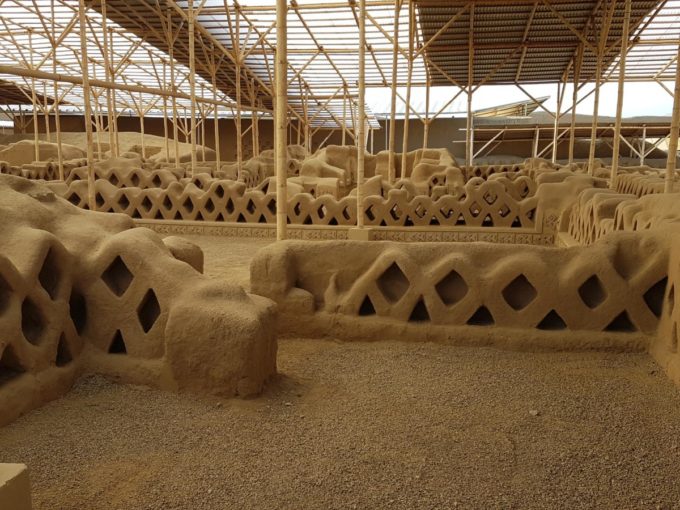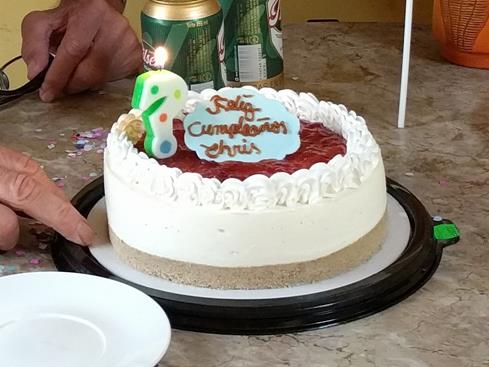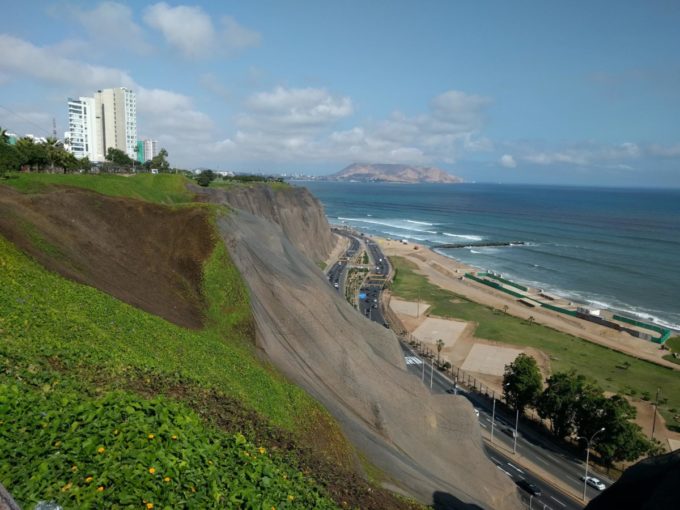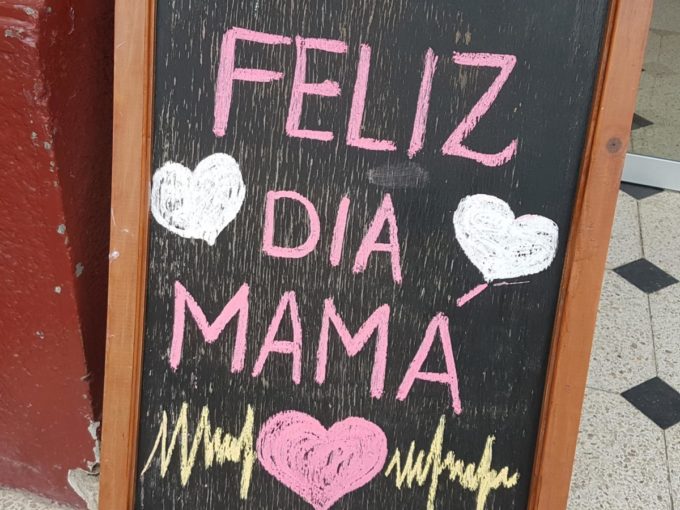It seemed odd all the long haul busses heading up the Peru north coast were all nighters. On day break I could see why. There’s nothing to see. Large tracts of desert. At least in our deserts down under we throw in a few rocks, trees and dry river beds here and there. By contrast here, there’s sand hill after sand hill. At least until you get further north nudging closer to the equator.
There is water. You just have to find it. Lima, Peru’s capital city of 10 million, receives next to no annual rainfall (9mm). In fact Lima is the world’s second largest city located on a desert, after Cairo. Its main water source is the River Rimac. You’d wanna love that river. Further north, while it looks dry and baron, there’s obviously water there. That’s because there was this ancient Chimor empire who loved playing with mud. They were good at it. So good they built cities with it that can still be seen today. One city, Chan Chan (meaning Sun-Sun… they must have a stuttering problem back then), just an overnight bus trip north of Lima, had an estimated population of around 60,000.
But here’s where it gets interesting. This Chimu lot predated the Inkas. So along came the Inkas. Now just when I was feeling sorry for them at the hands of the Spanish. Turns out they’re not much better. They liked what the Chimas had. Knocked them off and took over their city. Had no interest in their gold. Of course not that it was safe for too long. Not until the salivating Spanish set their eyes on it after they knocked off the Inkas.
There’s a moral to this story from history….
Thou shalt feel free to covet thy neighbours property, because in a few hundred years there’s a good chance you’ll be famous with tourists crawling over each other to view the remnants of your prized haul!
But there’s one little prized find that neither the Inkas, nor the Spanish or any lot before them found. Except in historical terms, just a few of us over the last couple years. That’s because for all this time it remained hidden. Until just recently. Set in magnificent scenery, the challenge of getting there makes it all the more rewarding. At the same height as Mt Everest base camp, the lack of oxygen and the threat of altitude sickness adds to the challenge. And did we find the hidden pot of gold? Find out more from this video… click here.
The facebook.com/myseniorgapyear page offers My Senior Gap Year updates as they happen, including live broadcasts .
(This is a public page so you don’t have to be logged into facebook to view the content, though they encourage you of course. If you are logged in, please click and follow this facebook page. Also please like and share any of the content to share with your friends.)
























































4 comments On In search of the hidden treasure….
Always looking for that hidden treasure Chris, I think the whole trip has produced some very rich pickings and some real gems.
Love the photo library as it details the fun you are having and the interesting people you are meeting. South America will be poorer when you finally leave.
Keep safe and well, look forward to a cold one at the Windsor on your return.
Cheers Les and Ang
I’d certainly look forward to a coldy at the Windsor Les & Ang. Can you get a pint for $2?
What an amazing sight with the different colours of rock and the snow. Could the dogs not sniff out the pot of gold I wonder?
It was certainly a rewarding trek Sheila. No pot of gold though!
Comments are closed.